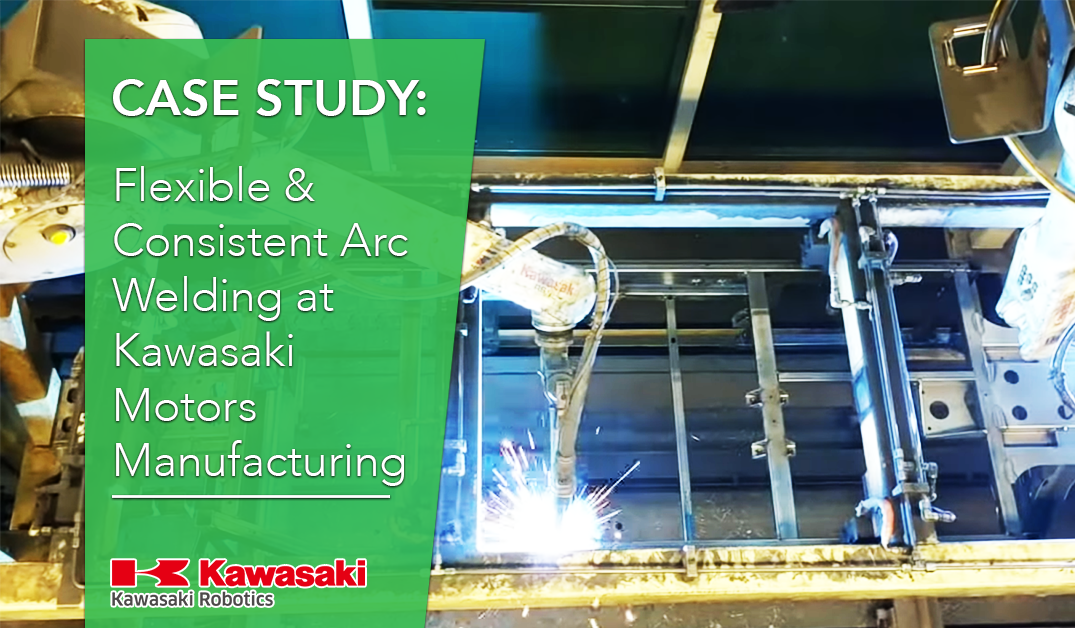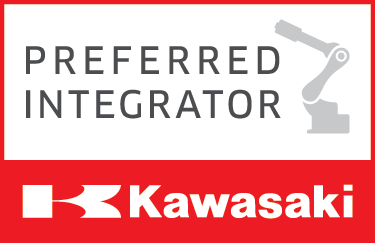
The following case study is about the use of Kawasaki’s very versatile, high-performance R series robots in demanding arc welding applications. While the scope of works in this instance is less than that delivered by Diverseco (then trading as RTA) at the Toyota Motor Company Australia and Mitsubishi Motors, the case study does describe how these robots can be employed to improve productivity and product quality.
OVERVIEW
As experienced arc welders become an increasingly scarce resource and mass production amplifies the need for consistent product quality, many companies are at a loss. They need to weld their parts, but it’s difficult to
find skilled welders who can produce high-quality products, let alone maintain that standard of quality while meeting daily production goals. Advances in robotic arc welding have made it possible for companies
to experience the quality and consistency of an expert arc welder on their best day, every single weld.
In the mid-1980s, Kawasaki Motors Manufacturing Corp (KMM) installed their first Kawasaki robots. Growing tired of inconsistent part fit and the constant struggle to find enough welders to keep up with production, KMM’s new robots were put to work arc welding their all-terrain vehicle (ATV) and Mule and Teryx four-wheeler frames. Now, 30 years later, the manufacturer uses 71 Kawasaki arc welding robots, and that number will grow to 84 by June of 2019.

Kawasaki Motors Type 3 Cell
CHALLENGES
• Improve part fit and eliminate chassis distortion
• Efficiently weld a wide variety of parts
• Minimize reliance on manual welding
KMM wasn’t looking for robots to increase the number of vehicles they were producing; they needed Kawasaki robots to maintain their current rate of production while providing a more repeatable frame. Because KMM needed to weld several different vehicles and models – sport utility ATVs and four-wheeler vehicles – they needed a versatile solution that could weld a variety of parts.
“Before robotic welding, there was a lot of frustration on the floor because you’d get burn didn’t fit well,” Gordon said. “We found that the quality of our product was dramatically improving with the implementation of laser tube cutting and the use of robotic welding.” -Scott Gordon, Chief Engineer, Kawasaki Motors Manufacturing Corp.
REQUIREMENTS
A Solution for Labor Shortage
For years, KMM had been fighting an uphill battle against a growing labour shortage in the welding industry. In order to staff enough welders with the necessary level of experience, KMM designed a training
course to certify new welders – an exercise that cost the company time and money and still couldn’t meet their demand for welders. Their newly trained welders were having to work overtime in order to meet
production goals, which was also adding costs. Now, 80% of KMM’s arc welding processes are automated using Kawasaki robots, and only 20% of the work needs to be done manually. Trained welders can
do a bulk of the work, which includes double-checking the robots’ work or accessing areas too small for the robot to reach.
Consistency & Reliability
Keeping up with increasing standards for product quality using manual techniques was a challenge. KMM does mostly pipe-to-pipe welding, so they couldn’t rely on a vision system to keep a robot true to the
process path – they needed robots with high levels of repeatability, so they could run programs without having to see the path. Kawasaki RS010L robots have a repeatability of ±0.05 mm, which results in the
consistency Gordon has seen firsthand during his 33 years of experience. They are equipped standard with arc welding-specific software to enable quick and easy programming of the process path. “Kawasaki robots are
by far the most reliable that we’ve seen on the market,” Gordon said.
SOLUTION
Flexibility was a must. KMM needed a solution that could weld a multitude of parts, and that they could modify to suit their fluctuating production needs and evolving product line. To accomplish this, KMM
developed five different types of cells using a combination of Kawasaki R series and F series robots, to weld different components of the ATV and four-wheeler frames. Four of the five cells (called Type 1, Type 2,
Type 3 and “Kneeling Easel” cells) weld parts ranging in size. Once complete, these parts are fed into the “Battle Bot” cell, which welds the entire ATV or four-wheeler body.
The Type 1 cell welds small parts like suspension arms, and the Type 2 cell welds mid-size parts such as seats or front guards. It uses a Kawasaki RS010L robot to weld mid-size parts as they rotate on a welding table,
attached to a quick-change fixture. The Type 3 cell has a 108 in. long and 52 in. wide cylindrical work envelope, making it ideal for welding long parts.
The “Kneeling Easel” cell was developed specifically for welding large 6 ft. by 6 ft. cab frames, whose cumbersome shape posed an ergonomic challenge and WHS risks for human welders.
For welding the entire vehicle frame, Gordon designed the “Battle Bot” cell, which is fed by the other cells. See video below. Because this cell was responsible for welding such an integral, and visible, section of the vehicle, KMM utilised a special waveform that combined the strength and penetration of MIG welding, and the clean look of pulse welding. With Kawasaki robots, they were able to do both in the same cell for a high-quality product with minimal splatter.
RESULTS
• Four cells specializing in welding different parts feed the “Battle Bot” cell
• One “Battle Bot” cell that welds the entire ATV or four-wheeler vehicle frame
• 80% of all arc welding is done by Kawasaki R series and F series robots
• Manual welds are required for only 20% of work
• Human welders double check robots’ work or weld difficult-to-access areas
• Product inconsistencies have been eliminated due to flexibility and high levels of repeatability found in Kawasaki arc welding robots
After seeing a drastic decrease in chassis distortion and an increase in consistency over 30 years of use, KMM continues to grow their fleet of Kawasaki arc welding robots.
The company’s reliance on manual welding has decreased, so they spend less time hunting for workers in the midst of a labour shortage, and more time on manufacturing. KMM will continue to use Kawasaki arc
welding robots to weld thousands of ATV, Mule and Teryx four-wheeler frames.
If you are searching for ways to improve productivity and product quality, contact the robotics automation experts at Diverseco – Kawasaki Robotics’s Preferred Integrator in Australia, New Zealand and Singapore.


